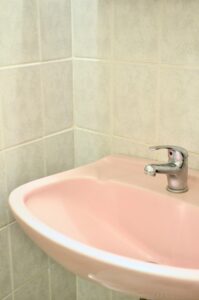Bathtub Leaky Faucet Repair
A dripping bathtub faucet is not just an annoyance; it can also lead to increased water bills and potential water damage. Fortunately, most faucet leaks can be fixed with some basic tools and a bit of know-how. In this ultimate guide, we’ll walk you through everything you need to know how to approach a bathtub leaky faucet repair job, ensuring a drip-free bathroom and saving you money in the process.
Table of Contents
- Understanding the Common Causes of Bathtub Faucet Leaks
- Essential Tools and Materials for Faucet Repair
- Step-by-Step Guide to Repairing Your Bathtub Faucet
- Preventing Future Faucet Leaks
- When to Call a Professional
Understanding the Common Causes of Bathtub Faucet Leaks
Faucet leaks can arise from several common issues:
- Worn-Out Washers and O-Rings: Over time, these small rubber parts can wear out, causing leaks around the handle or spout.
- Faulty Cartridges: Modern faucets often use cartridges to control water flow and temperature. A damaged cartridge can lead to leaks.
- Loose or Corroded Valve Seats: These are the connections between the faucet and spout. Corrosion or looseness can cause drips.
- High Water Pressure: Excessive water pressure can strain your faucet, leading to leaks.
Understanding these common causes will help you diagnose and fix your leaking faucet more effectively.
Essential Tools and Materials for Leaky Faucet Repair
Before you start your repair, gather the following tools and materials:
- Adjustable wrench
- Screwdrivers (Phillips and flathead)
- Plumber’s tape (Teflon tape)
- Replacement parts (washers, O-rings, cartridges)
- Plumber’s grease
- Vinegar (for cleaning)
- Soft cloths or rags
Having these items on hand will make the repair process smoother and more efficient.
Step-by-Step Guide to Repairing Your Bathtub Faucet:
Step 1: Turn Off the Water Supply
Before starting any repair, turn off the water supply to prevent water from spilling out during the process. Locate the shutoff valve for your bathtub, typically found under the sink or in a nearby access panel. Turn the valve clockwise to shut off the water.
Step 2: Remove the Faucet Handle
Next, remove the faucet handle to access the internal components:
- Pry Off the Decorative Cap: Use a flathead screwdriver to gently pry off the decorative cap covering the screw.
- Remove the Handle Screw: Use a Phillips screwdriver to remove the screw holding the handle in place.
- Pull Off the Handle: Gently pull the handle off to reveal the valve stem and other internal parts.
Step 3: Inspect and Replace Washers and O-Rings
Worn washers and O-rings are a common cause of leaks. Here’s how to replace them:
- Remove the Valve Stem: Use an adjustable wrench to unscrew the retaining nut and pull out the valve stem.
- Inspect the O-Rings: Check the O-rings on the valve stem. If they are cracked or damaged, replace them with new ones. Apply a small amount of plumber’s grease to the new O-rings before installing them.
- Replace the Washers: At the end of the valve stem, you’ll find a washer held in place by a screw. Remove the screw, replace the old washer with a new one, and reassemble the valve stem.
Step 4: Clean or Replace the Faucet Cartridge
If your faucet uses a cartridge, it may be the source of the leak. You can either clean or replace it:
- Remove the Cartridge: After removing the handle, use an adjustable wrench to unscrew the retaining clip or nut holding the cartridge in place. Pull out the cartridge. You can watch a video here – Leaky Faucet Repair Video
- Clean the Cartridge: Soak the cartridge in vinegar for 30-60 minutes to dissolve mineral deposits. Rinse it with water and reinstall it.
- Replace the Cartridge: If cleaning doesn’t solve the problem, replace the cartridge with a new one. Ensure you purchase the correct replacement for your faucet model.
Step 5: Reassemble and Test the Faucet
Once you’ve replaced the necessary parts, reassemble the faucet:
- Reinsert the Valve Stem or Cartridge: Place the valve stem or cartridge back into the faucet body and secure it with the retaining nut or clip.
- Reattach the Handle: Screw the handle back onto the valve stem and replace the decorative cap.
- Turn On the Water Supply: Turn the water supply back on and test the faucet for leaks.
Preventing Future Faucet Leaks
Preventing future leaks involves regular maintenance and taking some preventative measures:
- Regular Inspections: Periodically check your faucet for signs of wear and tear. Replace washers and O-rings as needed.
- Use Quality Parts: When replacing components, use high-quality parts to ensure durability and reduce the risk of future leaks.
- Adjust Water Pressure: Ensure your home’s water pressure is within safe limits. High water pressure can strain faucets and lead to leaks. Consider installing a pressure regulator if necessary.
- Clean Aerators and Cartridges: Regularly clean aerators and cartridges to prevent mineral buildup that can cause leaks.
When to Call a Professional
While many faucet leaks can be fixed with DIY methods, there are times when professional help is necessary:
- Complex Issues: If you encounter complex plumbing issues or can’t identify the source of the leak, it’s best to call a professional plumber.
- Extensive Damage: If the leak has caused significant water damage or if you suspect the problem extends beyond the faucet, seek professional assistance.
- Lack of Experience: If you’re not comfortable performing the repair yourself, a professional plumber can ensure the job is done correctly.
At Handy House Heroes we are one call away to come and get the leaky faucet repair work done at a very budget friendly cost. You can Visit us at www.handyhouseheroes.com or dial +1(833)8440831,there is always a handy man in your area.

Repairing a leaking bathtub faucet doesn’t have to be daunting. With the right tools, materials, and a bit of patience, you can say goodbye to drips and enjoy a fully functional faucet. By following this ultimate guide, you’ll be equipped to tackle common causes of leaks, perform effective repairs, and take preventative measures to avoid future issues. Remember, regular maintenance and timely repairs are key to keeping your bathroom leak-free and your water bills in check. Happy fixing and give is a call if you need a hand we will be happy to help get that leaky faucet repair sorted!


